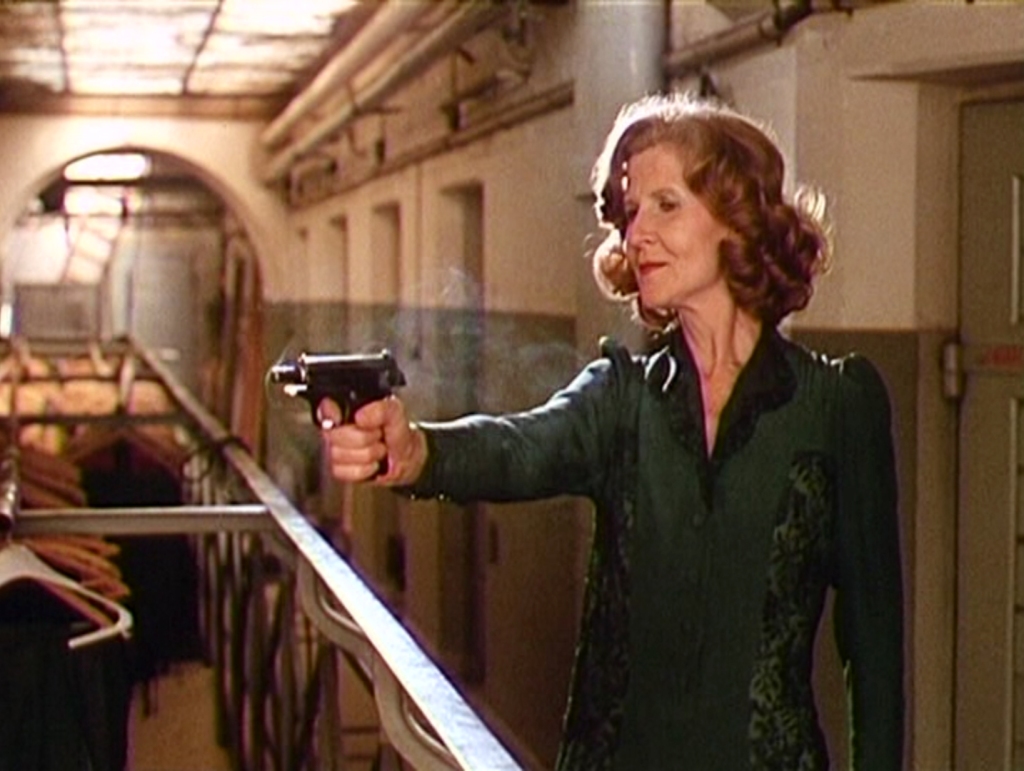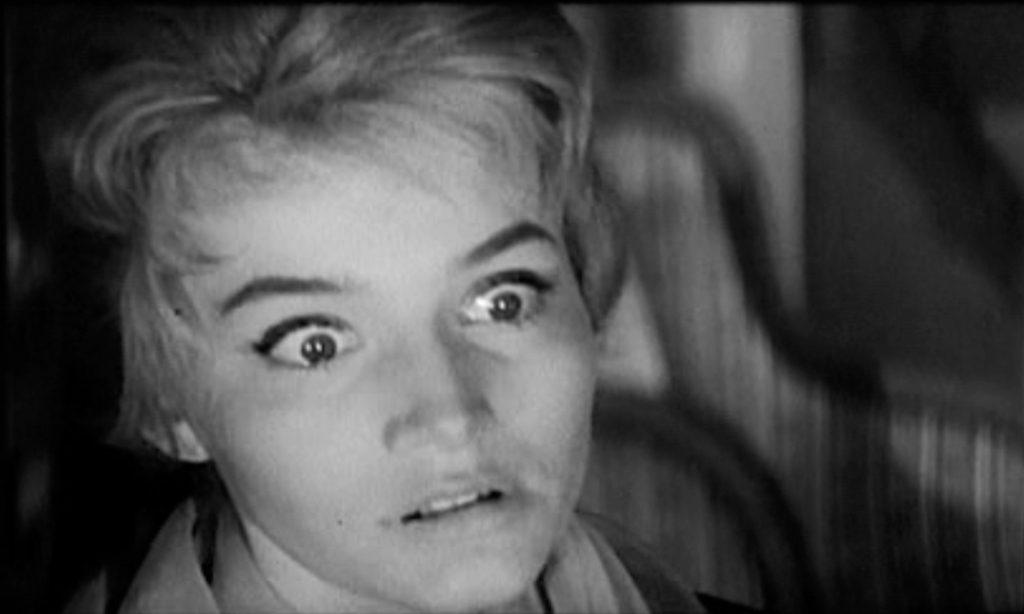
I have a love/hate relationship with movie listicles. Don’t we all? On one hand, it seems like a facile way to discuss films. They are rarely more than thumbnails with no depth or examination. But on the other hand, they are a great way to learn about movies one hasn’t seen. Since I don’t plan on doing any more individual movie reviews here (if you want to explore the films further, check out my book Movies Behind the Wall). Instead, from time to time I’ll be providing lists of films that I think deserve special mention. Each of these lists will be devoted to a specific genre or topic. For my first foray into this, I’ve chosen the subject of weird films.
I admit, I’ve always had a soft spot for oddball movies, no matter how good or bad they are (with the possible exception of Psyched by the 4D Witch, which is unwatchably bad). If a movie has a reputation for being an oddity, I’ll watch it, whether it’s Blood and Roses—Roger Vadim’s erotic and surreal version of the Carmilla story—or Anthony Newley’s dumpster fire of a movie, Can Heironymus Merkin Ever Forget Mercy Humppe and Find True Happiness?.
Here then, are eight of my favorite oddities from East German. The first six on the list are available with English subtitles, either on DVD from the DEFA Film Library at UMass Amherst, or streaming on Kanopy. The last two are not available with subtitles and might take some searching to find, but they are worth it.
In the Dust of the Stars (Im Staub der Sterne)

The movie that started my exploration into East German films is In the Dust of the Stars. It’s a 1977 science fiction film that is so bizarre it seems like something Andy Warhol and Paul Morrisey might have come up with. When the spaceship Cynro 19/4 goes to investigate a distress call on planet TEM 4, it discovers a dictatorship run by a man called “The Chief.” The Chief is a remarkably decadent fellow who likes to play music on a piece of plywood with Christmas lights tacked to it. This seems to cause him to have orgasms. If it sounds like I’m exaggerating, I’m not. You owe it to yourself to see this movie. It will erase any preconceptions you might have had about what a movie from East Germany would be like.
The Singing, Ringing Tree (Das singende, klingende Bäumchen)

I could fill any list of weird East German films with fairytale films (Märchenfilme). East Germany’s film production company DEFA made several and they are all weird as hell. The crown jewel among these films is The Singing, Ringing Tree. It sits at the top of any list of memorable East German Märchenfilme. Based a Grimm’s fairytales, the movie follows the misadventures of a naïve but honest prince who is turned into a bear by an evil dwarf. It’s one of the most colorful films ever made, which slightly tempers the horror inherent in the story. Watch it in black-and-white and it’s even more disturbing.
The Latest from the Da-Da-R (Letztes aus der Da Da eR)

Based on the cabaret performances by Meh and Weh—a comedy duo that pushed the envelope of what was acceptable and was always getting into hot water for it—The Latest from the Da-Da-R follows the duo as they stumble around the East German countryside, getting into trouble and meeting people. As they move through the world, things get darker and darker. The movie reaches its conclusion at the same time as the GDR.
The Land Beyond the Rainbow (Das Land hinter dem Regenbogen)

Like The Latest from the Da-Da-R, The Land Beyond the Rainbow is a political satire. It’s told in the form of a fable about a town called Stalina, where the people continue to revere Stalin, even though he’s dead. It’s not exactly a subtle dig at the SED (East Germany’s ruling party) and there’s no way this film could have been made at any time other than when it was.
Miss Butterfly (Fräulein Schmetterling)

Easily the most infamous of the so-called “Cellar Films” (Kellerfilme), Miss Butterfly was a highly experimental film about a young woman whose daydreams keep her from accepting reality. With a screenplay by Gerhard and Christa Wolf, Miss Butterfly challenged filmmaking conventions, which was not something the authorities in the GDR took lightly after the infamous 11th Plenum. It’s a charming little film that was almost lost forever if not for the efforts of the DEFA Foundation and Ralk Schenk at DEFA-Stiftung.
The Flying Dutchman (Der Fliegende Holländer)

As the title suggests, this is a film version of Richard Wagner’s opera, The Flying Dutchman, but it’s much more than that. Director Joachim Herz wanted to make a film like no other, pulling the story out of the opera house and putting it in the real world. The movie shifts between reality and the main character Anna’s thoughts by shifting between aspect ratios depending on whether we’re in the real world or in the world of Anna’s imagination. DEFA never made any horror movies, but this one has the look and feel of an old Universal monster movie.
Plus Two
All of the films I’ve listed above are available with English subtitles, but there are a few that also deserve mention that aren’t available with subtitles. If your German is adequate (and mine is barely adequate), you might also want to check out the following films if “Incredibly Strange” films interest you. I can’t list sources for these two because that information changes all the time. They have popped up on YouTube and other video channels from time to time, so check regularly.
Motoring Tales (Automärchen)

Motoring Tales is also a fairytale film, but it is unlike any other. It takes place in the present day and consists of three central tales, all centered around cars and the employees of a small garage. The second story in the trilogy, about a car that strikes a Faustian deal with its owner, is truly bizarre and features one of the nuttiest vehicles this side of Cinderfella.
Ursula

Probably the strangest film to come out before the Wende, this was a joint effort between DEFA and the Swiss Broadcasting Corporation (SRG). It was intended to be a TV-movie about Huldrych Zwingli, the leader of the Swiss reformation. The film that director Egon Günther turned in was so weird that the Swiss refused to show it at all, and the movie only received one showing on TV in East Germany before being put on a shelf.
I you like what I do here and would like to let me know, you can buy me a cup of coffee by clicking on the button to the left.
© Jim Morton and East German Cinema Blog, 2023. Unauthorized use and/or duplication of this material without express and written permission from this site’s author and/or owner is strictly prohibited. Excerpts and links may be used, provided that full and clear credit is given to Jim Morton and East German Cinema Blog with appropriate and specific direction to the original content.

